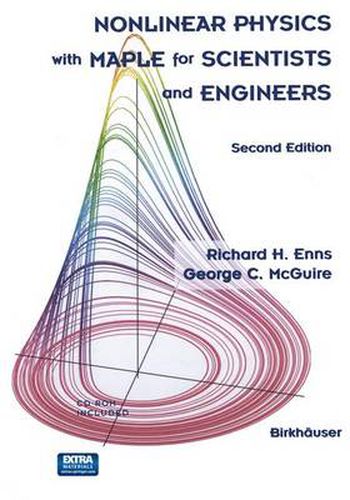Readings Newsletter
Become a Readings Member to make your shopping experience even easier.
Sign in or sign up for free!
You’re not far away from qualifying for FREE standard shipping within Australia
You’ve qualified for FREE standard shipping within Australia
The cart is loading…






This title is printed to order. This book may have been self-published. If so, we cannot guarantee the quality of the content. In the main most books will have gone through the editing process however some may not. We therefore suggest that you be aware of this before ordering this book. If in doubt check either the author or publisher’s details as we are unable to accept any returns unless they are faulty. Please contact us if you have any questions.
Philosophy of the Text This text presents an introductory survey of the basic concepts and applied mathematical methods of nonlinear science as well as an introduction to some simple related nonlinear experimental activities. Students in engineering, phys ics, chemistry, mathematics, computing science, and biology should be able to successfully use this book. In an effort to provide the reader with a cutting edge approach to one of the most dynamic, often subtle, complex, and still rapidly evolving, areas of modern research-nonlinear physics-we have made extensive use of the symbolic, numeric, and plotting capabilities of the Maple software sys tem applied to examples from these disciplines. No prior knowledge of Maple or computer programming is assumed, the reader being gently introduced to Maple as an auxiliary tool as the concepts of nonlinear science are developed. The CD-ROM provided with this book gives a wide variety of illustrative non linear examples solved with Maple. In addition, numerous annotated examples are sprinkled throughout the text and also placed on the CD. An accompanying set of experimental activities keyed to the theory developed in Part I of the book is given in Part II. These activities allow the student the option of hands on experience in exploring nonlinear phenomena in the REAL world. Although the experiments are easy to perform, they give rise to experimental and theoretical complexities which are not to be underestimated.
$9.00 standard shipping within Australia
FREE standard shipping within Australia for orders over $100.00
Express & International shipping calculated at checkout
This title is printed to order. This book may have been self-published. If so, we cannot guarantee the quality of the content. In the main most books will have gone through the editing process however some may not. We therefore suggest that you be aware of this before ordering this book. If in doubt check either the author or publisher’s details as we are unable to accept any returns unless they are faulty. Please contact us if you have any questions.
Philosophy of the Text This text presents an introductory survey of the basic concepts and applied mathematical methods of nonlinear science as well as an introduction to some simple related nonlinear experimental activities. Students in engineering, phys ics, chemistry, mathematics, computing science, and biology should be able to successfully use this book. In an effort to provide the reader with a cutting edge approach to one of the most dynamic, often subtle, complex, and still rapidly evolving, areas of modern research-nonlinear physics-we have made extensive use of the symbolic, numeric, and plotting capabilities of the Maple software sys tem applied to examples from these disciplines. No prior knowledge of Maple or computer programming is assumed, the reader being gently introduced to Maple as an auxiliary tool as the concepts of nonlinear science are developed. The CD-ROM provided with this book gives a wide variety of illustrative non linear examples solved with Maple. In addition, numerous annotated examples are sprinkled throughout the text and also placed on the CD. An accompanying set of experimental activities keyed to the theory developed in Part I of the book is given in Part II. These activities allow the student the option of hands on experience in exploring nonlinear phenomena in the REAL world. Although the experiments are easy to perform, they give rise to experimental and theoretical complexities which are not to be underestimated.